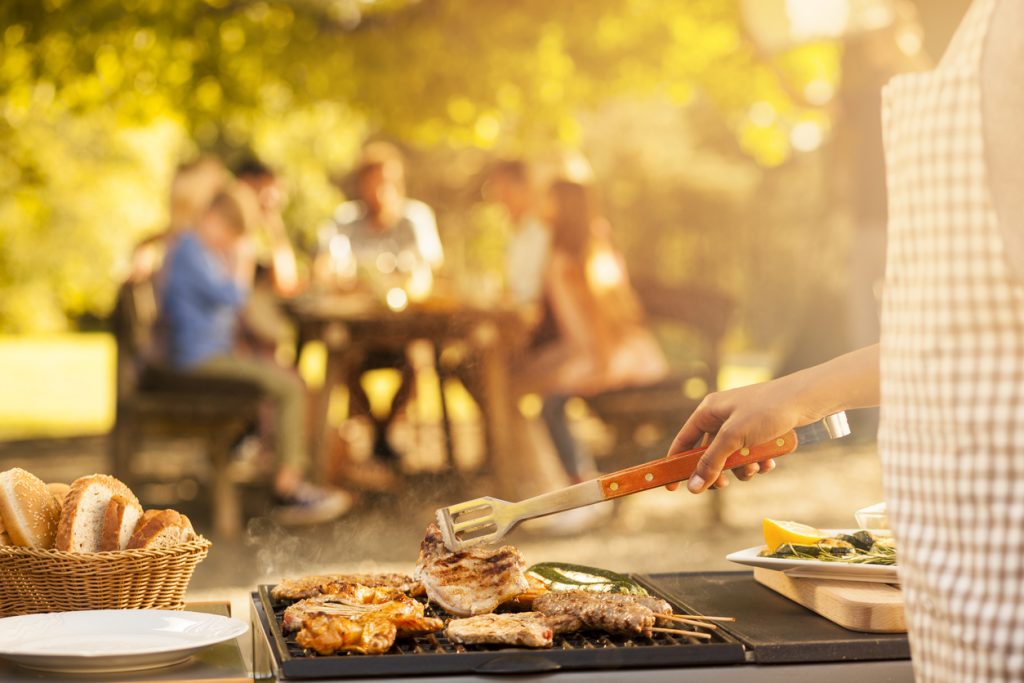Cooking and sharing meals is a time-honored summer season custom, specifically on vacations like Memorial Day, Self-reliance Day and Labor Day. While you might be believing more about serving your visitors, you ought to take actions to make sure food security throughout your summer season event, specifically if you are cooking, consuming or serving outdoors. Cases of gastrointestinal disorder, which affects about 48 million people in the U.S. each year, tend to increase in the summer.

Food security begins with your fridge and freezer. You can begin by ensuring they remain in excellent working order. Freezers, especially in hot, damp weather condition, can be vulnerable to frost accumulation, which can be a drag on efficiency. Thankfully, it is simple to avoid. Your fridge might need to work a bit harder to keep food cool in the summer season, so make it as effective as possible by keeping the coils without dirt and dust and effectively organizing the food within. Keep your fridge in between 37 and 40 degrees.
From keeping to cooking to serving, food temperature level matters. A digital thermometer is an important tool to guarantee you are cooking foods completely, no matter whether you’re preparing with an indoor grill, cooktop, oven or outside grill.
The U.S. Food Security Examination Service (FSIS) recommends these safe cooking temperatures for popular summertime foods:
Ground meat: 160 degrees for beef, pork, veal and lamb, 165 for turkey and chicken.
Fresh beef, veal and lamb: 145 degrees. Permit to rest 3 minutes before serving.
Fish: 145 degrees or till flesh is nontransparent and separates quickly with a fork.
Shrimp, lobster, crab: Prepare till flesh is pearly and nontransparent
Clams, oysters, mussels: Prepare till shells open
Both cold and hot foods can rapidly sneak into what the FSIS calls “the threat zone,” (in between 40 and 140 degrees Fahrenheit), when germs are probably to grow. Keep hot foods above 140 till they’re prepared to serve, and keep cold foods cooled till they’re prepared to serve. Serve cold meals on ice when possible. Do not leave foods out for more than 2 hours. Are you serving food exterior in heat? Cut that time to one hour, the U.S. Food and Drug Administration recommends.
If you’re doing your summer season celebration meal design, keep an eye on who is bringing what so you can prepare for safe storage and serving. Ensure there suffices area in your fridge so you can put the meals in there when your visitors get here if you aren’t preparing to prepare or serve the meals they bring right away. Are you out of area? Keep a cooler of ice on hand with a digital thermometer to keep track of the temperature level. Store your drinks in a separate cooler to prevent opening it often and raising the temperature level.
Do not recycle the meals you utilized to transfer raw food outside to the grill. Put them in the dishwashing machine as quickly as possible to prevent recycling them inadvertently.
Whether you are cooking inside or outdoors, paying cautious attention to food security while preparation and commemorating will assist you stress less and focus more on what is essential: offering your visitors fantastic memories.
Sign Up For the AHAM Customer Blog Site
( function( d, s, id) {
var js, fjs = d.getElementsByTagName( s)[0];.
if (d.getElementById( id)) return;.
js = d.createElement( s); js.id = id;.
js.src=”https://connect.facebook.net/en_US/sdk.js#xfbml=1&version=v2.8″;.
fjs.parentNode.insertBefore( js, fjs);.
} (file, ‘script’, ‘facebook-jssdk’));.


